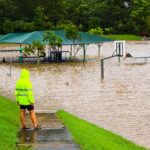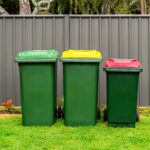Written by Vishal Chulliparambil and Kartik Venkatraman
Introduced on July 1st, 2019, Queensland’s waste levy is a key part of the State’s waste management strategy. The levy is applied to all waste produced and disposed of at landfill sites within the levy zone, which covers 39 out of Queensland’s 77 local government areas. You can view the full list of levy zones to see whether your area falls under metro, regional, or non-levy classification. A waste levy rate process flowchart is also available for further reference.
The primary goals of the levy are to reduce the amount of waste going to landfill, encourage waste avoidance, and provide funding for better resource recovery practices. Since its introduction in 2019, landfill diversion has improved, with Queensland’s recovery rate increasing from 53.9% in 2022-2023 to 57.1% in 2023-2024.
In Queensland, waste levy exemptions apply to disaster management and serious local event waste, as identified by the Department of Environment, Tourism, Science and Innovation. These exemptions are granted for a specified period following a disaster or significant local event. Guidance on applying for waste levy exemptions is also available.
How to Save on Waste Levy and Drive Sustainable Waste Management
- Resource Recovery and Recycling
Improve recycling programs, invest in food and garden organics (FOGO), and use the annual advance levy to enhance Resource Recovery services and infrastructure. - Waste Education Programs
Educate the community fosters responsible waste disposal behaviours. This will lead to a reduction in cross contamination of waste streams and lower overall waste volumes. - Policy Development
Establish local policies supporting sustainable policies and state legislation compliance (e.g., Waste Management Policy, Sustainable Procurement Policy). - Long Term Strategy and Planning
Invest in long term waste diversion and recovery planning and strategy, and outline actions for short medium, and long-term implementation.
Waste Roles Do Consultants Play in This?
- Waste Audits
Assisting council with waste audits to understand the composition of waste streams which help in identifying programs and plans to improve waste diversion. - Regulatory Compliance
Assisting councils in understanding and adhering to legislative requirements and align waste management practices with the Waste Reduction and Recycling Act 2011 and its regulations. - Strategic Planning
Advising on the development of waste management plans that prioritise sustainability and cost-effectiveness. - Technical Support
Offering insights into the latest technologies and methods for waste reduction and resource recovery. - Community Engagement
Designing and implementing education programs that encourage public participation in waste reduction efforts.
The waste levy in Queensland is crucial part of the State’s strategy to reduce waste, promote recycling, and build a circular economy. It enables councils to efficiently manage waste while encouraging communities and businesses to adopt sustainable practices.
The Queensland Government has committed to returning 70 per cent of the funds collected to resource recovery and other programs that reduce the impact of waste and protect the environment and local communities.




